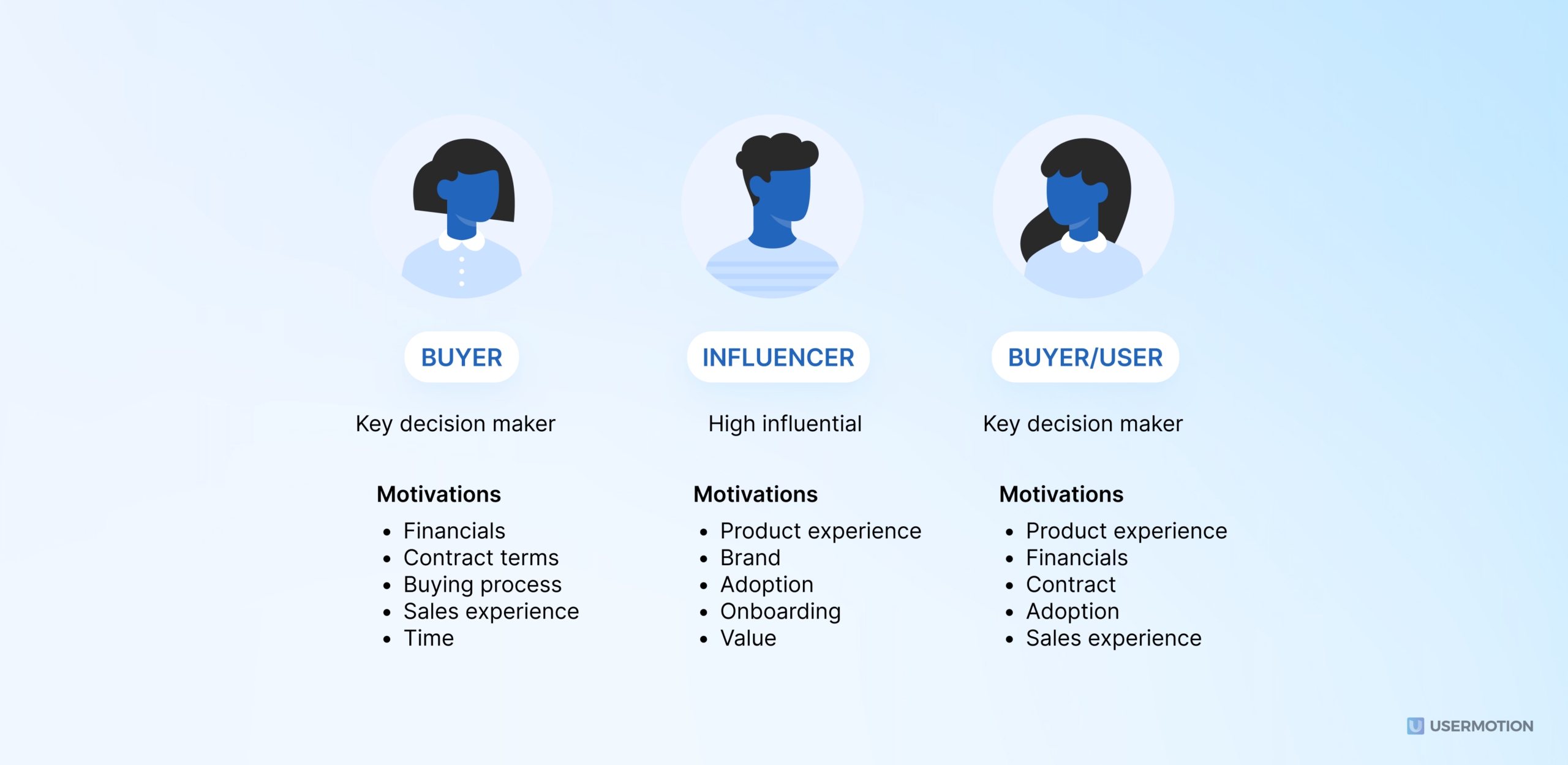Who are you selling your products to? Well, people, obviously. But what kind of people? What are the common interests that make them choose your product over any other?
Or, if we revert a little bit to the previous steps of the buyers, what roles to they have in their companies to decide to buy your product?
Creating a well-defined buyer persona increase the conversion rates by 10%.
HubSpot
When you combine all those criteria and create a hypothetical person, you get a “buyer persona” that is interested in buying your product.
I’m saying “buying” and not “using”. Ideal customer profile (ICP) is very much different from buyer persona.
So, today in this article, I will talk about:
TL;DR
- A buyer persona is a detailed profile of your ideal SaaS customers, helping you target them effectively.
- User personas focus on product usage, while buyer personas are about decision-makers in SaaS buying.
- Buyer personas help generate leads, improve sales, and guide marketing efforts.
- Understanding B2B buying stages and key decision-makers is crucial in SaaS marketing.
- Creating buyer persona involves research, data gathering, and identifying customer needs.
- Use ICP generators and tools for data enrichment and segmentation to create a detailed buyer persona.
- These personas guide content, campaigns, and product development strategies.
What is a Buyer Persona?
A buyer persona is a made-up person that represents your ideal real buyers. It’s a mix of demographics, behavior patterns, motivations, and goals – all rolled into one. Think of it as a blueprint of the kind of people who are most likely to buy what you’re selling.
Now, in the SaaS world, things get a bit more interesting. Here, your buyer persona isn’t just any customer – it’s the one who clicks that ‘subscribe’ button and keeps coming back for more.
We’re talking about someone who doesn’t just use your product but champions it in their organization. This persona helps you tailor your product and marketing efforts to snag more of these ideal customers.
Buyer Persona vs. User Persona
Here’s the deal: they’re cousins but not twins. A user persona is about the person who uses your product day in, day out. They’re the ones concerned with features, usability, and how your product makes their life easier.
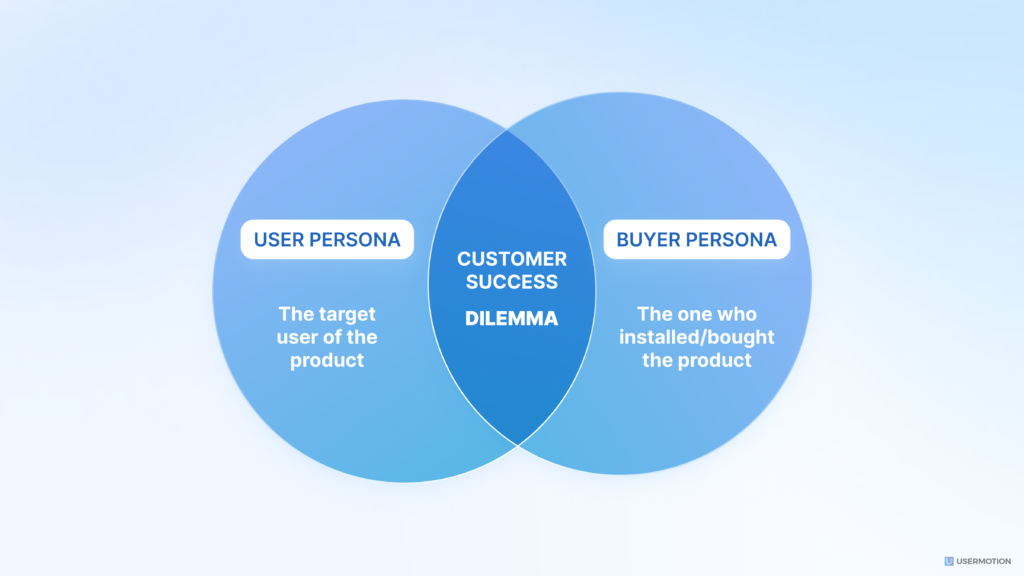
On the other hand, buyer persona is like the boss of buying decisions. They care about stuff like how much money they’ll make, how much it costs, and if it works with their current systems.
Here’s the catch: In SaaS, the person using the software is often not the one making the money decisions.
Knowing this helps you make marketing strategies that talk directly to the person with the money while keeping the users happy.
This double approach can change the game in SaaS. It can turn a one-time purchase into a long-lasting partnership by making both the buyer and the user happy.
Why You Should Create SaaS Buyer Persona
In SaaS, knowing your buyer persona isn’t just useful; it’s like having a secret map that guides you through a crowded market.
They’re not just profiles; they’re your strategic allies helping you navigate through the noise and connect directly with those who matter most to your business.
And having clear buyer personas will help you in pulling in the correct leads.
Impact on Lead Generation and Sales
Having a definite buyer persona helps you target your marketing better, so you’re not just reaching a lot of people, but the right people. These are the ones who see your product and think it’s exactly what they’ve been looking for.
When your marketing accurately targets what your ideal customer needs, their issues, and their goals, you get higher-quality leads. This leads to faster sales and many more successful deals. Essentially, it’s about spending your marketing budget smartly to transform potential customers into dedicated supporters.
Overcoming the SaaS Industry Challenges
Let’s be real: the SaaS industry is a maze. Rapid changes, stiff competition, high customer expectations – it’s a jungle out there.
But with buyer personas in your toolkit, you can navigate these challenges like a pro.
They help you understand your customer’s pain points, preferences, and peeves. This is gold, especially when you’re trying to stand out in a crowded market or keep your customers from hitting ‘unsubscribe’.
Decoding the B2B Buying Process
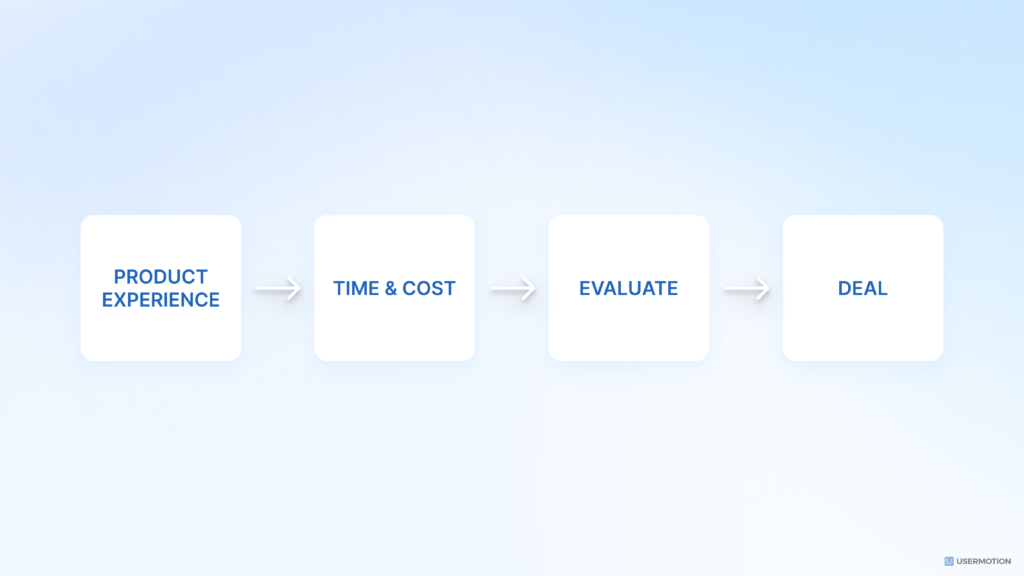
Understanding the Stages
The B2B buying process in SaaS isn’t a straight line; it’s more like a roller coaster with ups, downs, and loop-de-loops. It starts with awareness, moves into consideration, and then into decision-making.
But here’s the thing: at each stage, your buyer needs different things.
- Awareness is about catching their eye,
- Consideration is about showing them you’ve got the solution,
- And decision-making? That’s about proving you’re the best choice.
Key Roles in SaaS Purchases
Making a purchase is usually not a one-person job, but more like a team effort. First, someone notices that something is needed. Then, another person helps shape the choice. There’s also the person who makes the final decision, the one who actually buys the item, and finally, the people who use the product every day.
- The one that notices the need: Initiator
- The one that shapes the decision: Influencer
- The one that make the final decision: Decision-maker
- The one that actually makes the payment: Buyer
- The one that uses the product daily: User
I am not saying that these are all different people all the time; in some SaaS teams, sometimes, you might find one person taking on multiple roles or even all of them.
For instance, in a small startup, the same person could be the initiator, influencer, decision-maker, buyer, and even the user.
This flexibility is common in dynamic environments where team members often wear multiple hats, adapting to the needs of the business.
But still, each role has different needs, concerns, and motivations.
When creating buyer personas, it’s important to include all kinds of roles involved in buying. This way, you can make messages that connect with each pesona who has a say in the decision. Think of it like making a mix of content that appeals to everyone involved, so your product becomes the clear choice for their business.
But most importantly, your buyer persona should draw the clear line between the “user” and the “buyer” to focus on the leads that make the decisions.
Building Effective SaaS Buyer Persona
Now that you know the nits and bits that helps you why a buyer persona is important, let’s get into the actual strategy.
If I need to make a quick summary, these steps will help you:
- Create a “persona” that represents your target audience that is willing to pay you for your services,
- Help you understand how you can find them,
- And help you keep them interested in your product so that they don’t churn after the first interaction.
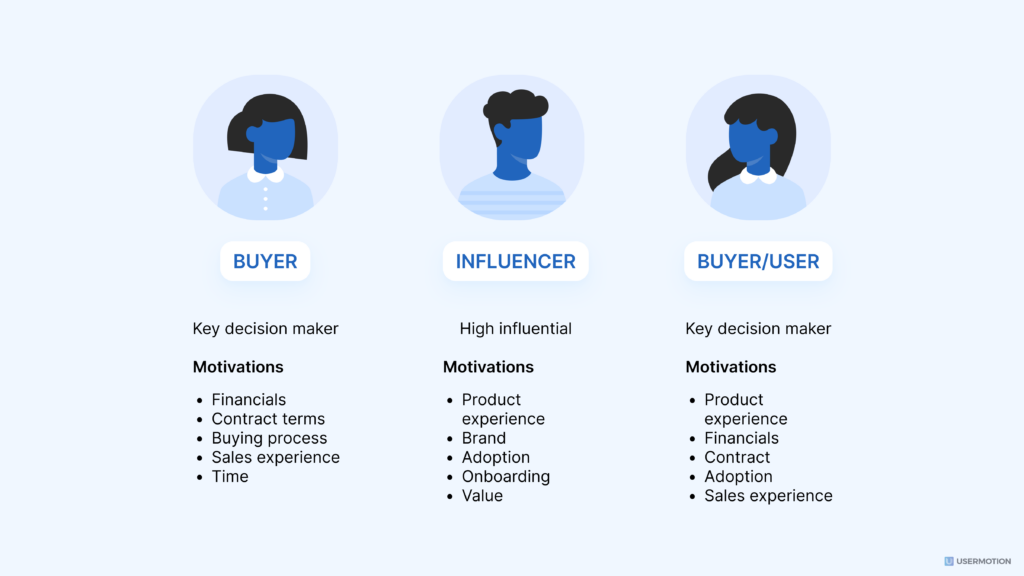
1. Data Gathering: Quantitative vs. Qualitative
First things first: data is king. You need both quantitative (hard numbers and stats) and qualitative (stories and experiences) data.
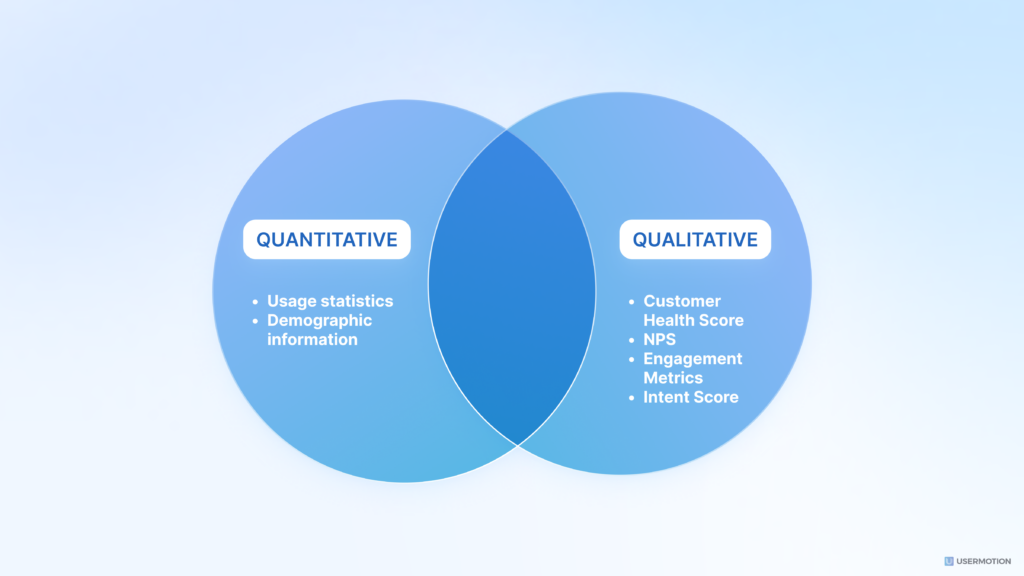
- Quantitative data, like usage statistics and demographic information, gives you the ‘what’ about your customers. It’s the backbone of your persona, providing solid, measurable facts. These are your countable metrics that are represented by numbers.
- On the other hand, qualitative data brings in the ‘why’. It’s about customer interviews, feedback, and surveys. This data paints a picture of your customer’s experiences, challenges, and motivations. This data consists of the customer health score, the NPS, and the engagement metrics of different segments.
The blend of both these data types ensures that your personas are not just figures with names but are reflective of real, breathing customers with needs, challenges, and goals.
2. Conducting Market Research
Now, let’s talk about gathering this data. Start with existing data from both external and internal resources.
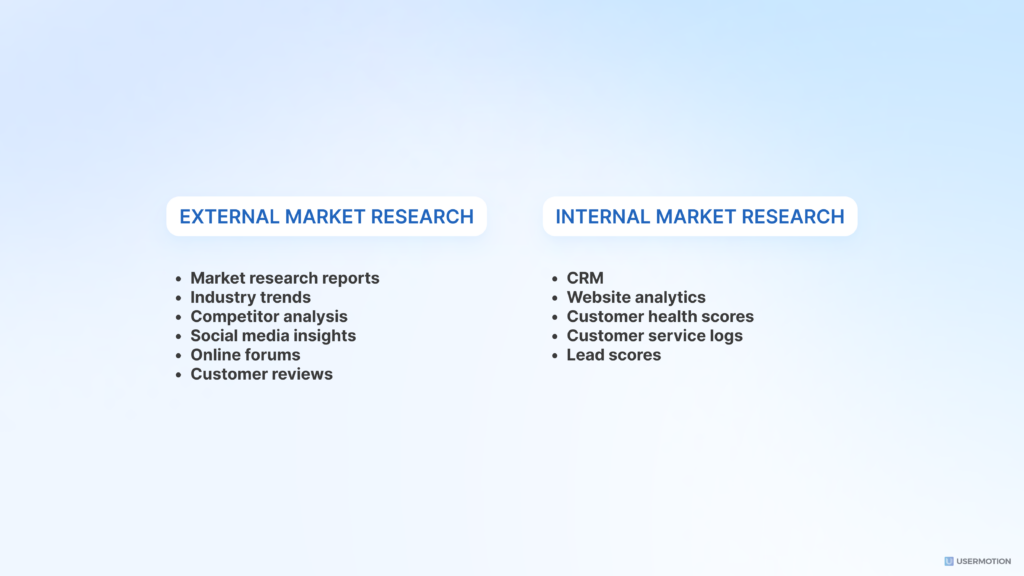
- External: Look at market research reports, industry trends, and competitor analysis. Also, consider social media insights, online forums, and customer reviews on other platforms.
- Internal: Dive into your CRM, analyze website analytics, and focus on customer service logs.
This gives you a baseline understanding of who is using your or other products for the same purposes and how.
But don’t stop there. Get out into the wild.
Conduct surveys that ask pointed questions about user challenges, preferences, and experiences. Hold focus groups to dive deeper into the problems your customers face and how they use solutions like yours to solve them.
And don’t shy away from one-on-one interviews – they can be goldmines of insights.
Organize this data meticulously. Look for patterns, commonalities, and outliers.
The goal here is to transform these data points into a narrative about your typical (and not so typical) customers.
Remember, your market research is the compass that guides your persona-building journey, ensuring that every step you take is in the right direction.
3. Identifying Key Decision-Makers
You’re not just selling to a user; you’re selling to a decision-making chain. So, how do you figure out who these key players are?
Start by peeling back the layers of your sales process. Look at your past deals – who was involved from the client’s side?
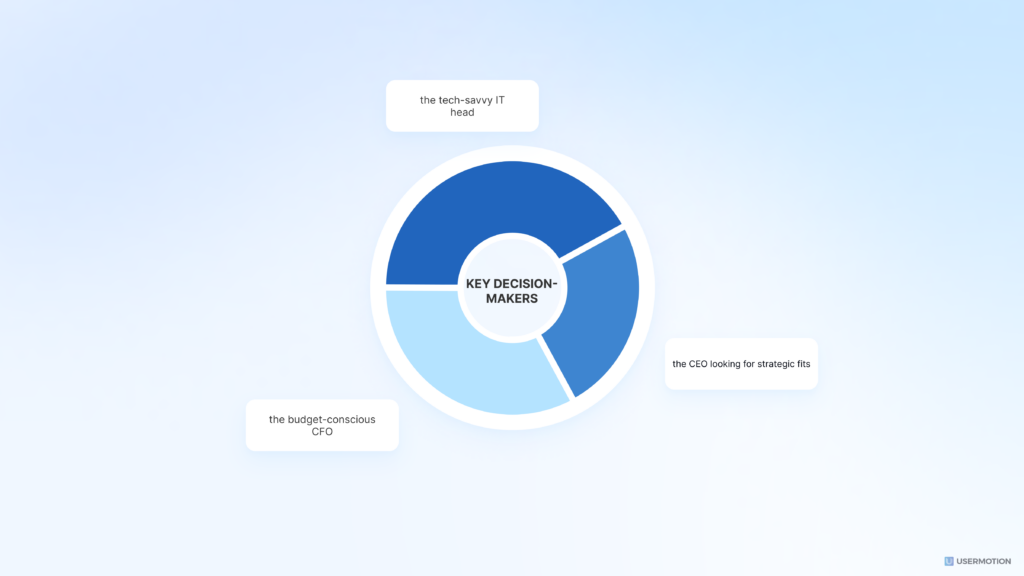
Typically, you’ll find a mix:
- the tech-savvy IT head,
- the budget-conscious CFO,
- or the CEO looking for strategic fits.
⭐ Here’s a pro tip: Don’t just focus on job titles. Understand their real roles and responsibilities. Understand the pain points and triggers of each potential decision-maker in an organization. And remember, in smaller companies, one person might wear multiple hats.
4. Analyze and Organize the Data
Got a mountain of survey responses and interview transcripts? Great! Now it’s time to turn this data heap into actionable insights.
Start sorting – look for patterns and trends.
▶️ Does a particular challenge keep popping up?
▶️ Are there commonalities in how different users interact with your product?
But here’s the thing: don’t just stop at obvious trends.
Sometimes, the most valuable insights are hidden in offhand comments or in the gaps between what users say and what they do. If you use a survey tool that helps you categorize by keywords, then that will be to your advantage.
Organizing this data helps you not only understand your existing customers better but also spot potential new markets or product improvements.
5. Enrich Data and Segment Your Audience
Alright, you’ve got your basic data. Now, let’s add some spice to it. They take your basic customer data and enrich it with additional details like company size, industry, and even tech stack.
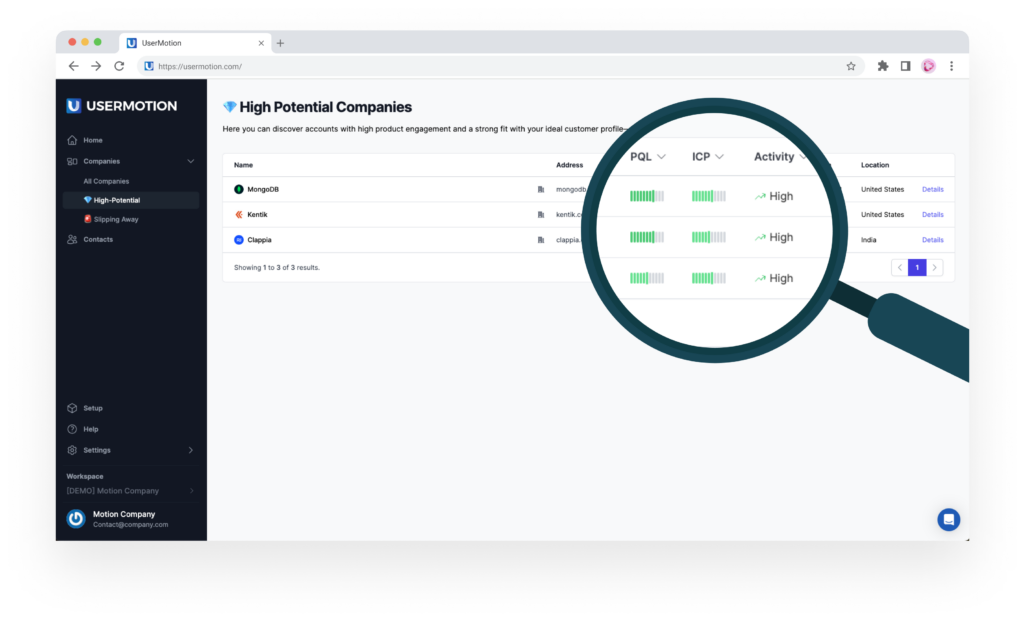
And to ease this process, use UserMotion.
This enriched data is like a high-definition picture of your customer – clearer, sharper, and more detailed.
And then comes segmentation. This is where you start seeing your audience in high-res. Segment them by revenue, company size, user count, even their actions like email opens or product usage.
This segmentation lays the groundwork for creating not just a buyer persona but a whole gallery of personas, each representing a slice of your market. This way, your marketing becomes like a well-aimed arrow – focused and effective.
6. Create Detailed Buyer Personas
Now, it’s time to breathe life into your data and craft your buyer persona. Picture your ideal customers – who are they?
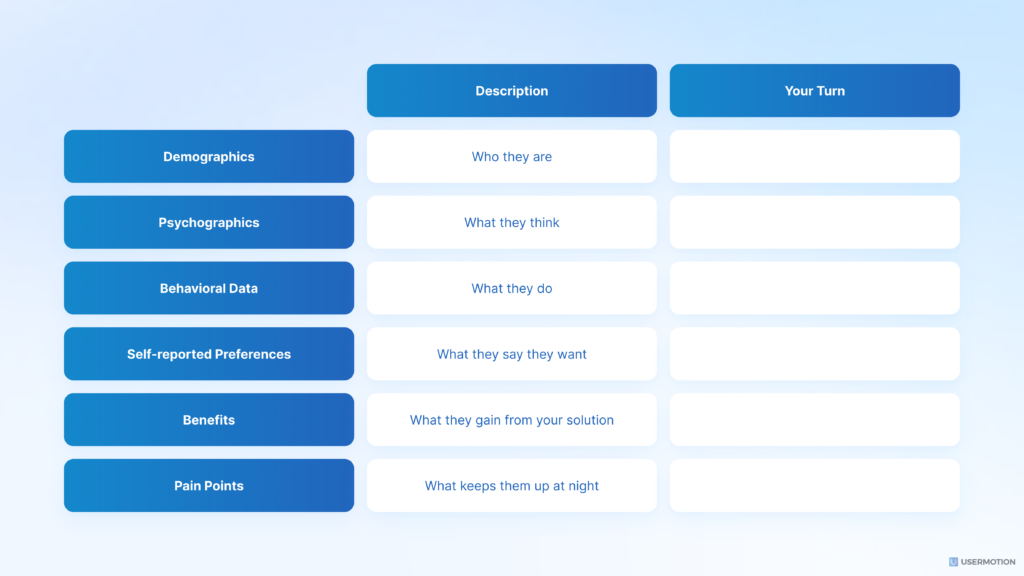
What drives them?
- Mix and match demographics (who they are),
- psychographics (what they think)
- behavioral data (what they do),
- and their self-reported preferences (what they say they want).
This blend paints a vivid picture of who you’re talking to.
Next, zoom in on what they gain from your solution (benefits) and what keeps them up at night (pain points).
Your product isn’t just a tool; it’s a hero in their story. How does it swoop in to save the day?
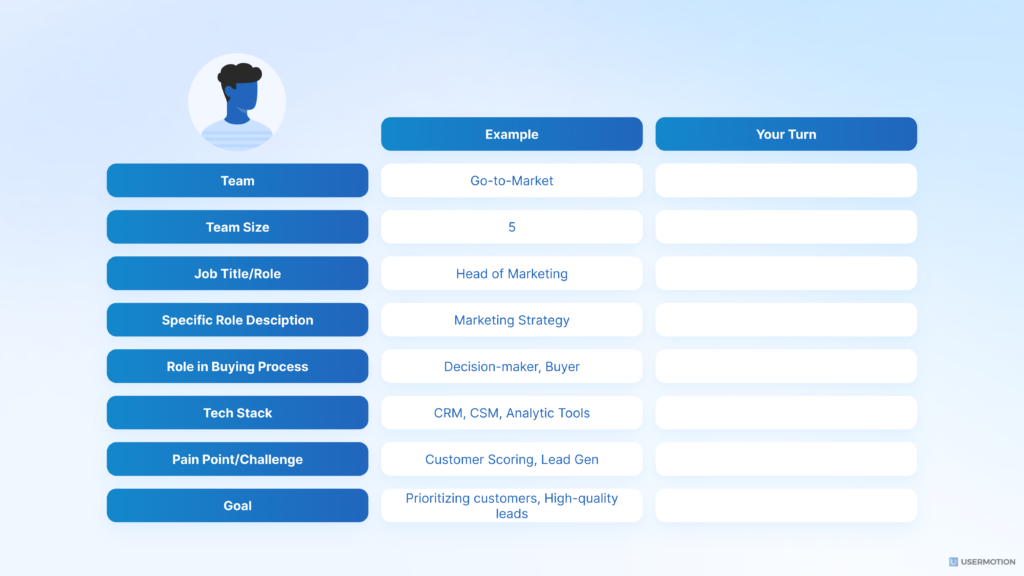
And here’s a tip: Give them names, maybe Alex or Sam – names that don’t box them into gender stereotypes. Visualize them. Maybe Alex is a tech-savvy marketer in their 30s juggling deadlines, or Samis a CEO looking to scale their startup.
7. Refine Personas Based on Specific SaaS Nuances
In the B2B SaaS, your buyer personas often overlap like a Venn diagram.
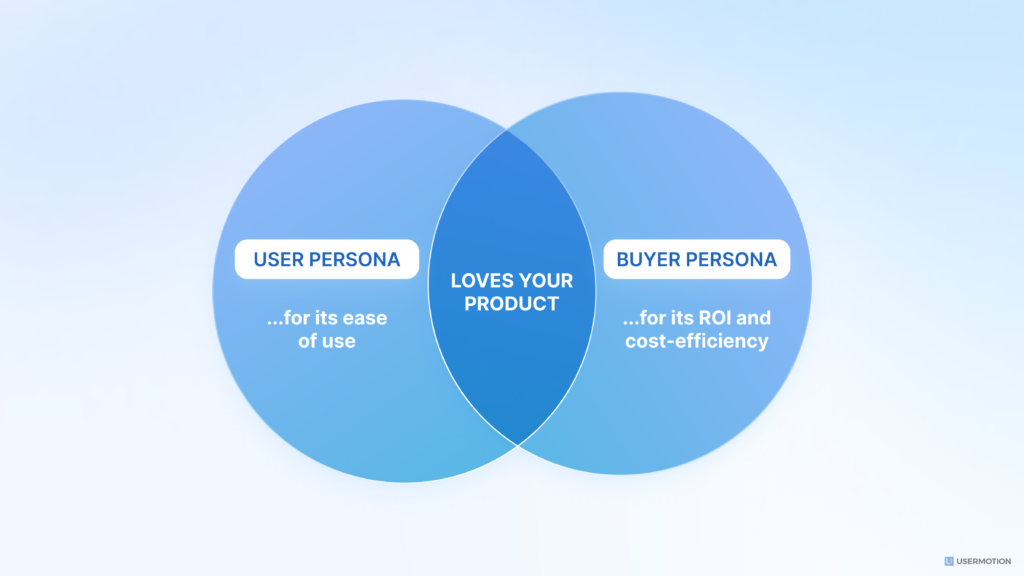
For instance, the end-user might love your product for its ease of use, but the CFO cares about ROI and cost-efficiency.
Also, don’t forget the blending of personal and professional lives in today’s digital world. The platforms and media your personas use for personal browsing can offer valuable insights into their professional decision-making.
It’s all about finding them where they are, be it LinkedIn, YouTube, or industry-specific forums.
8. Develop Strategies Based on Buyer Personas
Let each persona guide your content creation, sales, marketing campaigns, and even product development. For example, if Alex’s pain point is managing multiple marketing campaigns, your content should speak to that, perhaps with a blog post on ‘Top 5 Tools for Multi-Campaign Management.’
But it’s not just marketing. These insights should be used into product development (maybe adding features that address specific pain points) and customer service (understanding the typical queries or issues each persona might face).
Conclusion: Mastering Buyer Personas for SaaS Growth
All in all, the buyer persona is what will bring your business to the ideal users. It’s a bridge, it’s a connection, or it is the exact thing you need to bind two parties.
This connection is essential for attracting the right customers, enhancing their experience, and ultimately, for business growth. A buyer persona is the secret ingredient that aligns your offerings with customer expectations, making your solution the go-to choice for your target market.
Frequently Asked Questions
5 customer personas in buying-process are:
– Initiator: The one that notices the need
– Influencer: The one that shapes the decision
– Decision-maker: The one that make the final decision
– Buyer: The one that actually makes the payment
– User: The one that uses the product daily
But, even if these are all different people most of the time; in some SaaS, you might find one person taking on multiple roles or even all of them.
Nowadays, it’s important to consider more than just their demographics, job role or what they need. You should also look at the technology they use (their tech stack), the size of their company, the kind of challenges they face in their industry, and how they make decisions.

